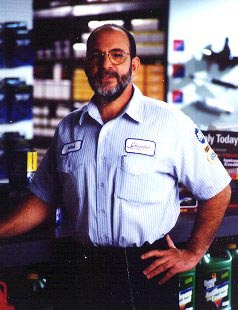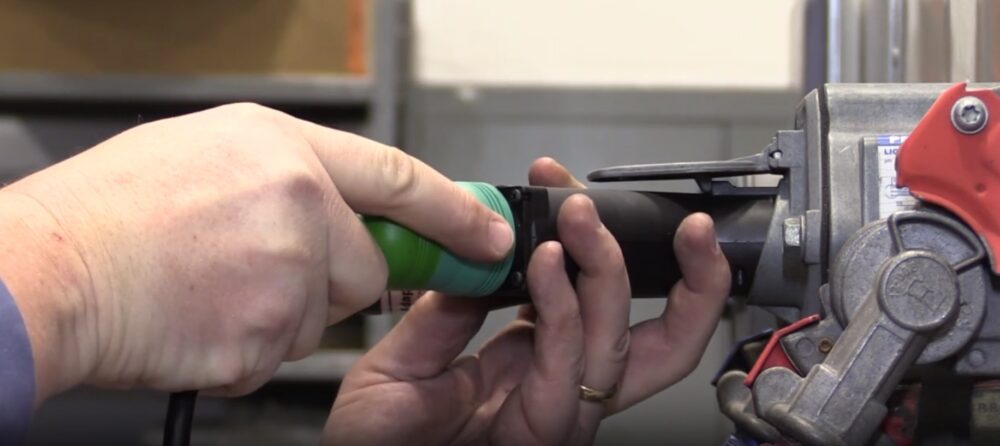
Contributing Editor
In and of itself, there shouldn’t be much to write about. But, unfortunately, in this case there was. It turns out this particular master cylinder had been purchased years before by the supplier who got the call. And, again, there shouldn’t be much to write about. After all, it’s not like we’re talking about chicken or fish: something likely to “spoil” over time.
However, there was a problem with time that really wouldn’t have had much to do with the part if it hadn’t failed. But, fail it did. The part had been on the shelf literally for years after the company that built it had gone out of business: something we did not know; could not know; should not have to know. When it was ordered and then installed, it made all the difference in the world.
It was certainly an experience worthy of a column of its own. But, that’s not the story I have to tell…at least, not here and now. It was just one of a series of events that punctuated a rather bizarre afternoon that started with my return home from a business trip to Akron, OH.
I arrived in L.A. late in the early afternoon: late enough after a full day of flying for any “normal” person to call it a day and just head home. The operative expression here is “normal person,” and after more than 40 years in this business I’m sure I no longer qualify!
I should have gone directly home and not come into the shop at all. But, I felt compelled to “stop by” just to ensure that everything — the building, its contents and all the people I left there — were still there upon my return. Unfortunately, that wasn’t the case. The building and the contents were still there, but my office manager and lead driveability tech were both conspicuously absent.
Where were they? They were on their way back from downtown Los Angeles. And, why were they on their way back from downtown Los Angeles? That’s where the vehicle with the failed master cylinder I just mentioned left its owner stranded. But, believe it or not, this was just the prologue to something far more frustrating.
You see, just as I was starting to get my arms around a stranded customer, the parts failure and my missing people, the telephone rang. Without thinking, I reached for the handset: “Hi, this is Mitch at Schneider’s Automotive. Can I help you?”
Little did I know just how wrong I was going to be!
The caller was a “long-time customer.” Not a “loyal and lifetime” customer who’s been coming in forever. Not a “regular” customer. Not even a “good” customer; just a customer who’s been coming in, on and off, for a long time.
It seems he was reviewing some “old” invoices when he found something that “troubled” him and needed some additional information to help sort it all out. It seems he had brought his motor home in “a while ago” for a “check engine” light and assorted driveability problems. The subsequent inspection and testing resulted in a new thermostat and oxygen sensor.
A LONG DAY GETS EVEN LONGER
Now, the truth of the matter is I would be lying if I told you that I was even marginally interested. I had just undergone a three-day, cross-country trip that started at 5:30 in the morning when I left L.A. and picked up again just about as early when I started home some 48 hours later, an all-day meeting in between, two hours at the airport before check-in both days, more than four in the air and an hour-and-a-half on the freeway. But, then, as I was sort of listening, but really thinking about my two missing employees, a stranded customer and a 100-mile roundtrip to salvage an almost unsalvageable situation (And, that was before I found out the company that built the master cylinder was no longer in business and there would be no warranty!), I could have sworn I heard him say that he didn’t really think he needed the work that had been done.
That’s all it took to get my attention.
I asked him why he felt the work was unnecessary and he told me that in going through his records, he found that he had replaced that thermostat just a “few” months before he brought the motor home to us. And, because he had just replaced the thermostat, he didn’t think he should have needed a new one. And because he didn’t think he needed the thermostat, he didn’t think he needed the oxygen sensor either.
The longer we talked, the more insistent he became.
“How can you justify replacing a brand new part. And, if you could do that, how do I know I really needed that sensor thing?”
By that time, I was already deep inside the bowels of my computer looking for the invoices he was questioning, and for a record of what had really transpired on our side of the service counter. I needed to know what brought the vehicle to the shop in the first place? And, why I picked up the phone.
I found the two invoices in question. The first invoice identified the fact that the MIL was on and a couple of driveability and performance problems. The initial road test, inspection and testing revealed an engine that was running below 160° F and two diagnostic trouble codes — one for low operating temperature and one that pointed at the O2 sensor.
In a case like that, what would you do? Look for a bunch of other, more exotic problems, or confirm the thermostat was stuck open, restore a normal operating temperature and then move on? We opted to look at the thermostat first and then address the O2 sensor problem after we had restored a normal operating temperature.
IT PAYS TO SAVE…INFORMATION
Fortunately, we’ve developed operating code templates over the years with built-in “fields” to help us record before-and-after test results. These serve as both our “long-term memory” and back-up documentation for situations just like this, where you find yourself challenged months or even years after the details of an event are long since forgotten.
I started to share the readings that led to our recommendations, when he stopped me in mid-sentence: “How can you be so sure there was anything wrong with the thermostat?”
“Because, our technicians documented the test results and because it worked — the thermostat and O2 sensor solved the problem!”
I don’t know if it was because I was tired and not thinking clearly, but it took this long for me to look at the date and mileage on the invoice, and believe me, looking didn’t make things any better!
The work had been done 35 months ago…I’ll let that sink in for a moment.
The work this banana was challenging as unnecessary had been completed a few days under three years prior to the phone call!
It’s amazing what that kind of a revelation can do for your clarity of thought…And, for your confidence!
Now, it was my turn to stop him in mid-sentence. “Did you just say what I think you just said, because if you did, it sounds like you’re telling me the work we did didn’t need to be done? And that would mean you’re calling me both a liar and a crook.
“You feel you didn’t need a new thermostat because you replaced it just a ‘few’ months before you brought the vehicle to us. And, because it was new, you believe there couldn’t have been anything wrong with it.
“Is that correct? Because, if it is, I have a couple of questions for you…First, how many is a ‘few?’ You told me you brought the vehicle to us ‘a while ago.’ And, ‘a while’ turned out to be three years. So, exactly, how many months is a ‘few?’
“Second, if the thermostat was new and had just been replaced, why didn’t you take it back to whoever replaced it when you were told it had failed? If it had just been replaced, why did you let us change it…again?
“Third, if it wasn’t necessary, how do you explain the fact that it worked; it solved the problem.
“Fourth, it sounds to me like you’re asking for a refund on work that was completed three years ago, on a vehicle that you’ve been driving continuously and without a problem ever since. That couldn’t be right, could it? Because, if it is, that would be, at the very least, unreasonable…if not absurd!
“And, finally, why are you calling us? Why aren’t you beating up the guy who put the thermostat in originally, the one that wasn’t working? How come you’re so comfortable assuming it was us who failed and not just a defective part?
“It sounds a lot to me like you’re accusing us of doing something unspeakably dishonest, while you’re certain the first person you took the vehicle to could do no wrong and that makes me very uncomfortable and more than just a little angry.”
“No, no, you don’t understand…”
“Oh, but, I think I do. You want to believe there could be nothing wrong with the first thermostat, so consequently its replacement had to be unwarranted. That makes me a crook and the other service provider faultless.
“The very fact that you called me and not him has to mean that you trust him more than you trust us, so I’m going to suggest a simple solution: That’s where you need to take all of your vehicles from now on because you should never patronize someone you don’t have complete confidence in.”
I wanted to finish up with something clever, like: Nice talking to you, or, have a great day! But, I just couldn’t. That’s when I heard him repeat the very same words I had used a few minutes earlier come back across the phone: “Did you just say what I think you just said, because if you did, it sounds like you’re never going to work on my vehicles again and you can’t do that!”
That’s when I had a second chance to come up with something clever after all: “I can. And, I did. And, it shouldn’t take you ‘a while’ or ‘a few miles’ to figure the rest out for yourself.”


